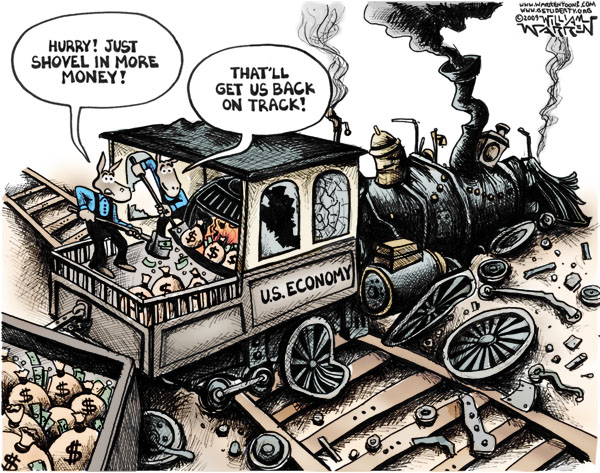Some proponents of a stable monetary policy and a strong dollar got giddy over Janet Yellen’s first major speech in her tenure as the new Federal Reserve Chair.
Apparently, merely mentioning some sort of “automatic stabilizer” which Yellen defined as “when the public better understands and anticipates how the central bank will respond to evolving economic conditions” is enough to herald the return of the policies of Paul Volcker and Ronald Reagan that sought to squelch the great inflation of the 1970s.
Yellen was advocating a rules-based form of monetary policy. She mentioned, “The famous Taylor rule provides one such formula” of “a simple rule linking the federal funds rate to the shortfall or excess of employment and inflation relative to their desired values.”
Yellen’s speech led to incredibly misleading headlines such as “Fed Chair Janet Yellen to follow Reagan’s ‘Taylor Rule’” at Breitbart.com by Chriss Street.
Yet, Yellen was only mentioning the Taylor rule as an example of a rules-based monetary policy that is predictable. Nothing more.
The Taylor rule’s original formulation by Stanford University economics professor John Taylor provides that “the federal funds rate rises if inflation increases above a target of 2 percent or if real GDP rises above trend GDP. If both the inflation rate and real GDP are on target, then the federal funds rate would equal 4 percent.”
A careful reading of her speech deviates from the Taylor rule in many significant ways, such that one can only conclude that Yellen really has no intention of ever following the Taylor rule. How do we know?
For starters, she describes the conditions under which interest rates would rise, starting with the federal funds rate set by the Fed: “in determining how long to maintain the current target range of 0 to 25 basis points for the federal funds rate… the larger the shortfall of employment or inflation from their respective objectives, and the slower the projected progress toward those objectives, the longer the current target range for the federal funds rate is likely to be maintained. This approach underscores the continuing commitment of the FOMC to maintain the appropriate degree of accommodation to support the recovery.”
That is not the Taylor rule, which had the precision of a mathematical formula. A computer program could operate it.
Leaving no doubt, however, Taylor himself recently opined on where the federal funds rate ought to be based on his rule. In an April 2014 paper, “Re-Normalize, Don’t New-Normalize Monetary Policy,” he wrote, “By my calculations the short rate should be about 1.25 percent in the U.S.”
Instead, the federal funds rate stands at 0 to 0.25 percent where it has been since December 2008, and according to Yellen, where it will stay there for the foreseeable future.
A rules-based monetary policy is not to be confused with the hard money policies of the 1980s. Ben Bernanke from 2009 onward followed a similar set of “rules” to Yellen’s in Federal Reserve proclamations about when rates would rise.
But that does not mean they bear any resemblance to the Taylor rule or will result in robust growth and lasting prosperity. Breitbart.com’s Street writes, “Conservatives and the youth should be optimistic that America is moving back into that ‘shining city on a hill.’”
No, they shouldn’t, and no, we’re not.
Interest rates are still near zero. The Federal Reserve is still adding $55 billion a month in U.S. treasuries and mortgage-backed securities to its balance sheet.
On the controversial practice of quantitative easing (QE), Taylor wrote, “the distortions caused by these massive interventions and the impossibility of such policy being rule-like indicate that such a new-normalized policy would be a huge mistake. It is best to have a goal of getting the balance sheet back to levels where the demand and supply of reserves determine the interest rate.”
Taylor calls for reducing the Fed’s balance sheet. Yellen and the Fed are continuing to add to it. Taylor would have already hiked rates. Yellen hasn’t moved the needle at all, she is just continuing with the same old Bernanke policies.
Although Taylor wrote in favor of “steady predictable monetary policy,” for Yellen that could well mean QE forever.
Bottom line: Taylor is calling for a renormalization of monetary policy. Yellen and the Fed epitomize the new normal of easy money he is speaking against. They are almost on complete opposite ends of the spectrum of which rule the Fed ought to be following.
Robert Romano is senior editor of Americans for Limited Government.







